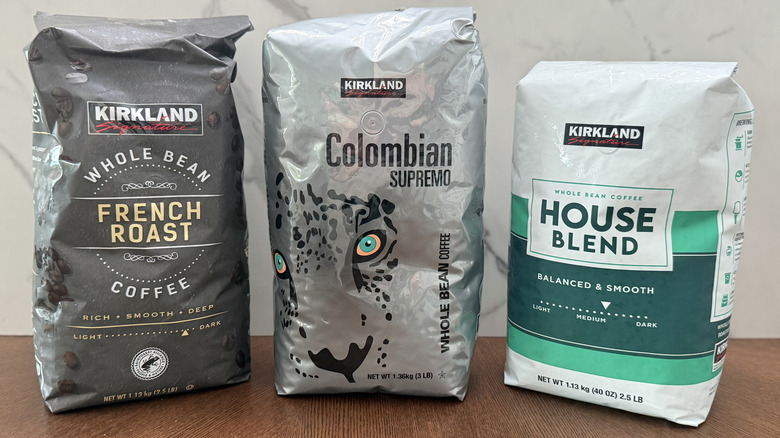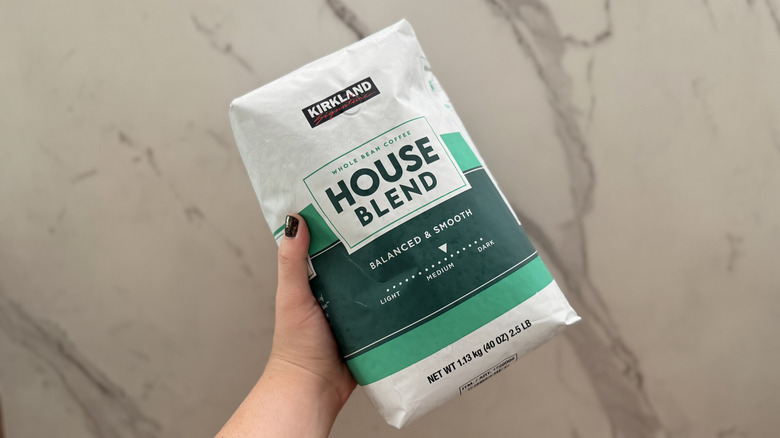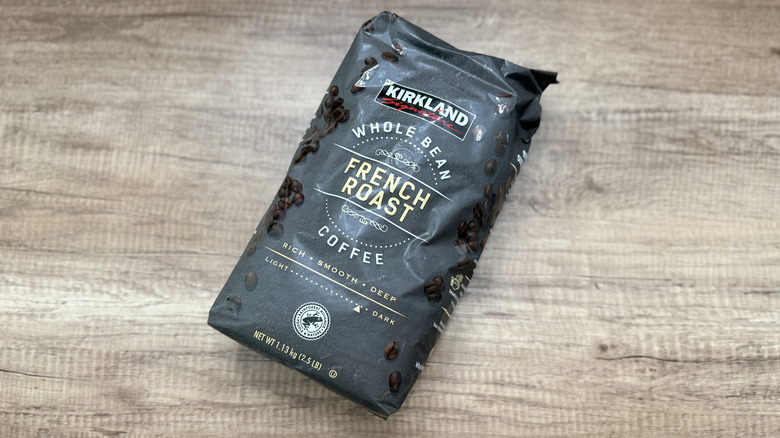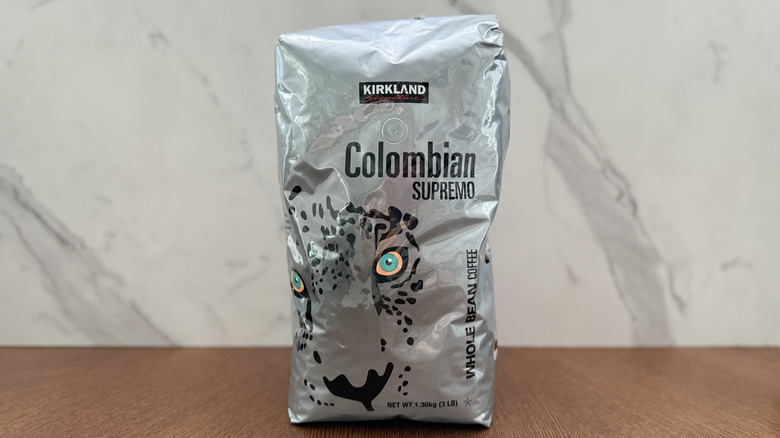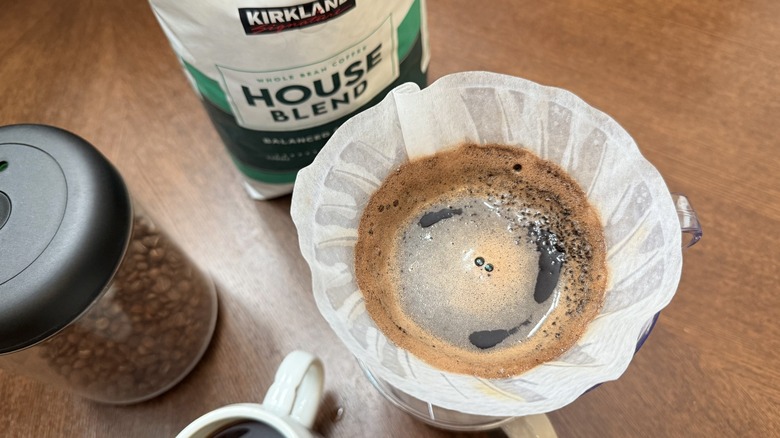I Tried 3 Costco Kirkland Signature Coffees And Wouldn't Recommend A Single One
Over the course of the last year, my family has been on something of a mission: to find and assemble the best coffee bar we can. An essential part of that has been the actual coffee. After our favorite micro roaster closed up shop, we began looking for others. After tasting many, we fell in love with Onyx Coffee. We began a Roaster's Choice coffee subscription, and a different coffee gets shipped to us each month. Though there have been some roasts we've loved more than others, they have all been phenomenal. So, when it comes to great coffee, I'm spoiled.
However, I also have a new Costco membership, so we've been making our way around the store testing various Costco meal kits and discovering some of the best foods (like the Kirkland Signature vanilla ice cream). I took all whole-bean Costco's Kirkland brand coffees I could find and pitted them against each other, ranking them according to the best flavor. Unfortunately, there were only three varieties I had access to, but you can find more in pre-ground formats. I chose to keep it to whole-bean coffee since that's how I've gotten the best coffee and I have access to a grinder at home.
3. Kirkland Signature House Blend
I've always considered house blend coffees to be the kind poured in small cafes throughout the morning into those white porcelain mugs smothered in local advertisements. The coffee tastes very basic: a little bad, but not disgusting, but better than Kirkland's Signature House Blend.
When I looked into the bag before even brewing, my initial impressions were that it smelled burnt and looked oily. That burnt smell even made its way into the grinding when it didn't smell good there either. The bag advertised that the coffee would be "balanced & smooth" with a marker that indicated that it was just past the medium roast, into slightly dark territory.
Sipping, I didn't get any of the fruit notes that I typically get in Onyx coffee I drink, and there was a very strong bitterness to it. There's nothing enjoyable about sipping it or the experience of making it. I also noticed that it looked extremely dark in the cup and didn't really smell the way coffee should. It seemed that any flavor that had been in the bean had been burned out.
2. Kirkland Signature French Roast
Of the three coffees I sampled, the Kirkland Signature French Roast was the darkest, far on the edge of the light to dark roast meter, according to the range on the bag. Even still, I found this flavor to taste less burnt, and, thus, better than the house roast.
The French Roast bag also held completely oily and rather dark beans. The scent wasn't nearly as dark or as harsh of a smell as the house blend of the beans. Instead, they smelled like varieties brewed at Starbucks. Though it certainly had those burnt and bitter notes like the house roast, there was a lingering background flavor that I struggled to identify. More than anything, the French roast was better because it wasn't as burnt as the house, filling in that space with something like a toasted, smoky flavor. That said, this still isn't better than the coffee I drink each day.
1. Kirkland Signature Colombian Supremo
Though there were only three coffees to try, the Kirkland Signature Colombian Supremo was definitely my favorite, but it still wasn't as good as our normal brew. As a medium roast, it's more complex and tastes less burnt.
Like the other two varieties, the beans looked oily, but they were a little lighter in color than the house or French roast. Though most of that burnt-in flavor is gone, some is still there with a very dark roasted flavor. Though the house roast probably should have reminded me of the diner coffee, this one actually tasted more like the brews served over breakfast. Of the three coffees, this was also the only variety that took up significant labeling space on the package to wax poetic about where the beans came from. In this case, the raw coffee beans came from Medellín, Colombia (the country that actually produces the most coffee). The package explains that the area gets 2.5 meters of rain each year and enjoys an ideal temperature balance to bring a coffee that is both sweet and sharp.
Methodology
I picked up as many of the coffees as I could find, eventually seeing that there were only three in my store. I tried each and ultimately ranked them according to taste. To sample each, my husband and I brewed up batches using 20 grams of whole bean coffee, grinding them on level five of our Fellow Ode 2, and then brewing via pour-over.
To rank these, we sampled each against a cup of our Onyx brew and put them in order according to what was most tasty. We noticed that compared to our Onyx coffee, a larger volume of each roast was necessary to achieve that 20 grams worth of beans. This is no doubt due to the loss of moisture during the roasting process. When more water is lost, it takes more beans to achieve the same weight.

